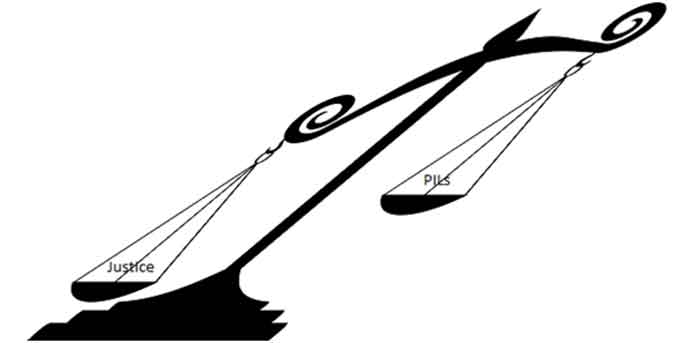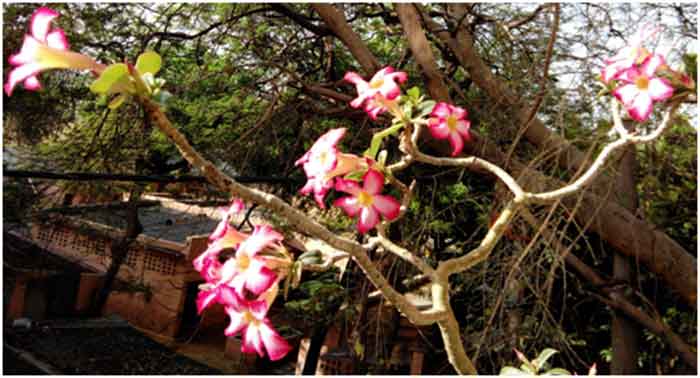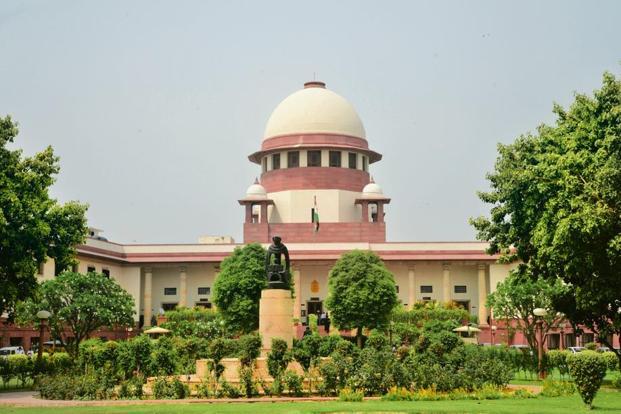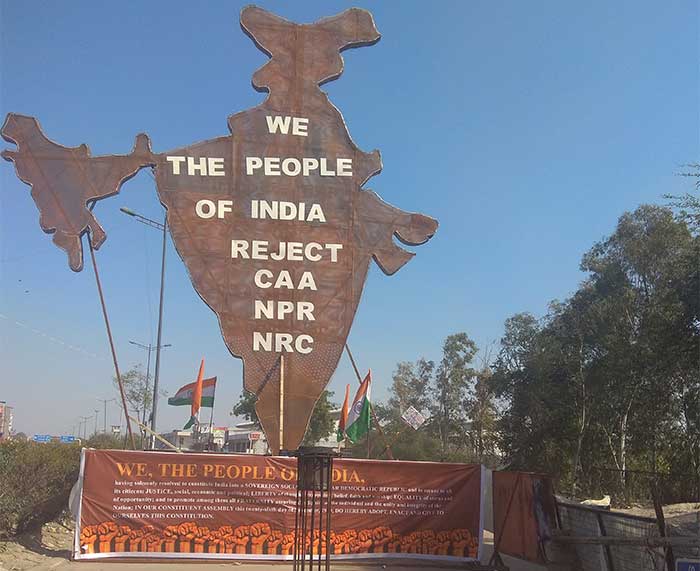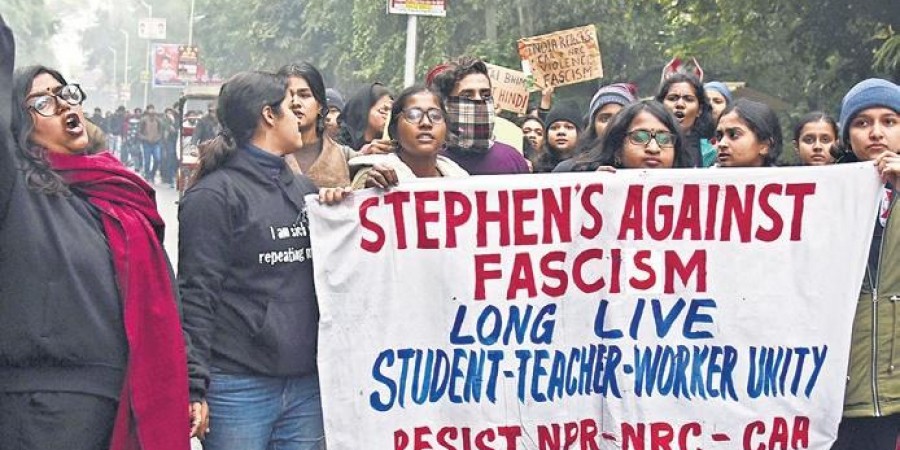Ever since the present regime in India betrayed the people of Kashmir through Presidential proclamation of August 5-6, 2019 – and whose constitutionality is being reluctantly and belatedly tested by the Supreme Court of India – Nanak’s quote is being rendered more and more apt day by day. In one fell blow the assurance of plebiscite to Kashmiris was shelved. No talks were held even with a single Kashmiri prior to this act of betrayal.
Right at the beginning when a batch of petitions pertaining to Kashmir got filed in the Supreme Court, the judges showed no inclination to hear these urgently; delay of weeks and months was engineered by the powers that be. Primacy was granted to the Ayodhya case; the court could have easily constituted another bench to hear the Kashmir petitions right away. It did not. It could have heard the Kashmir petitions on a priority basis and kept the Ayodhya matter in abeyance – albeit for a while. It chose not to. It treated habeas corpus petitions emanating from Kashmir almost in a contemptuous manner. And all this while the whole of Kashmir and its seven million people were put under virtual house arrest with total denial of telecommunication services, public transport, access to hospitals; there was closure of educational institutions, shops and business establishments. Shortage of essential items of daily use ensued. Popular protests were ruthlessly suppressed. Indians learnt about this from foreign media. Political leaders were detained, arrested and jailed. No one from outside Kashmir was allowed to visit the state. The police, para-military and the army called the shots. The roads were deserted; even reaching a mosque for Namaz was out of question. Ordinary people struggled to get news about their neighbours, friends and relatives. Editors found it difficult to bring out morning newspapers. Kashmiris stranded in different parts of India were not able to get in touch with their near and dear ones in Kashmir. It was a harrowing experience. And it was indeed a never ending ordeal.
True there were peaceful, democratic protests all over India in support of the betrayed people of Kashmir. Civil society groups, mainstream political parties and Kashmiris in different parts of India protested against the worst mass torture of seven million brave Kashmiris. Demands were made for bringing status quo ante in Kashmir as on 4th August, 2019.
Any judge of the Supreme Court of India with even a modicum of sensitivity, concern, justice and equity should have entertained the habeas corpus petitions and asked all the detainees to be produced before the Supreme Court within 48 hours. The judges in India fared no better than those in Hitler’s regime. The Supreme Court ruthlessly abandoned and deserted the people of Kashmir when they were most in need of judicial protection and relief.
And all this while the five judges of the Constitution bench of the Supreme Court of India were expending their energies to lay primacy of faith over evidence adduced in the (in)famous Ayodhya case. These five judges acted as pall-bearers and buried secularism six fathoms deep. It may be reminded that the then Chief Justice of India – presiding over the bench – earlier had a sexual harassment charge levelled against him by an employee of the Supreme Court itself.
Even the petition filed by the executive editor of Kashmir Times did not elicit any immediate relief – only futuristic homilies were offered. Kashmir Times fought the onslaught on the media in Kashmir the way Indian Express and Statesman fought during the Emergency era. Again the Supreme Court could have stayed the operation of Jammu and Kashmir Reorganisation Act, 2019; it did not. In fact some of the petitions were dismissed/shelved and did not even merit being sent to the duly constituted Constitution Bench!
Continuing their onslaught the judges of the Supreme Court preferred to give priority to the Sabarimala case rather than constitutional validity of the Citizenship (Amendment) Act [CAA]. No stay was granted on CAA. No immediate hearing was fixed for CAA. The delaying tactics followed for the Kashmir petitions were repeated for the CAA case.
The higher judiciary refused to provide justice to JNU students who were bashed up by outsiders; no relief to Jamia students when the police had barged into the Jamia campus, ransacked the library and beat up students and teachers. The judges did not even ensure that FIRs got filed in these cases; forget any suo motu action by judges.
The Shaheen Bagh protesters have faced the wrath of the Chief Justice of India (CJI), who appeared to be solely concerned about the death of an infant reportedly due to pneumonia because of cold weather. It is another issue that pneumonia is caused by bacteria, virus, fungi etc; cold weather causes common cold not pneumonia. Anyway the CJI relied on media reports alone and never saw or asked for the infant’s death certificate before pontificating on the alleged irresponsibility of the mother of the infant! The CJI ought to know that one million children die due to pneumonia every year in India. If only the CJI walks along the boundary wall of the Supreme Court of India, he would see women labourers with infants/children working on an ongoing construction project – which would ensure a tunnel road for the safe passage of judges of the Supreme Court during morning/evening hours so that they are not caught in a traffic nightmare!
In a similar display of total disregard for the Indian Evidence Act, the National Commission for Protection of Child Rights – based on a video gone viral – has concluded that children protesting at Shaheen Bagh need to be saved from mental health issues! Psychological counselling was recommended. This body did not get the authenticity of the viral video checked; did not talk to the children or their parents; but straight away asked the police and district magistrate to ensure implementation of its orders!! Has even the law of natural justice been given a burial, otherwise why were the protesters not given a hearing?
The Muslims bore the brunt of the recent engineered violence in north-east Delhi. It is reminiscent of the 1984 anti-Sikh pogrom. The Chief Justice, Delhi High Court gave a long rope to the powers that be – no immediate FIRs against BJP netas giving hate speeches! No early hearing; next hearing after six weeks!! No judicial intervention!!! The judicial masterly inactivity continues; worse activists and opposition politicians were framed through public interest litigations before the same court the very next day.
It may well be that peaceful protests in India may get banned; and there would be shoot at sight orders for any peaceful protesters. Just a glimpse at what is happening around would give an idea. Reports from all over India mention sedition cases being filed by those protesting against CAA; protesters have been injured or killed in police firing. No permission is granted for peaceful demonstrations; collective fines are imposed on those protesting where public property gets damaged; cultural activities attract charge of sedition; arrests are made in protests where preamble of the Constitution of India is being read. Even permission for forming a human chain at Rajghat, Delhi is denied; Section 144 gets imposed where ever protests are planned.
[The title of the article is a quote from Sri Guru Granth Sahib Ji. The verse in Gurmukhi script was composed by Guru Nanak, Sufi-saint and founder of Sikhism. Nanak had witnessed and chronicled the oppressive rulers of his times about five centuries back in India.]
Dr. P.S. Sahni is a member of PIL Watch Group. Email: pilwatchgroup@gmail.com





